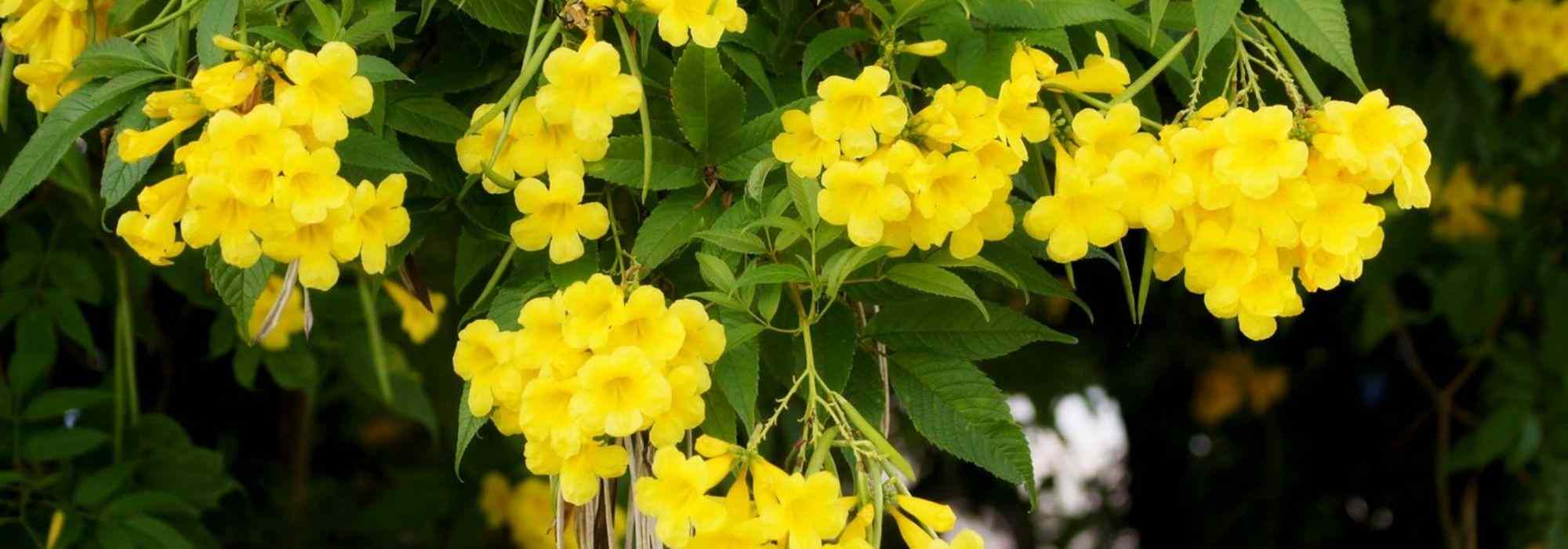
Which Trumpet Vine to Plant According to Your Region?
Discover our selection
Contents
The Trumpet vine or trumpet creeper, Campsis in Latin, surprises many a passer-by around the corners of old streets in our villages. This vigorous liana with flowers that are generally orange or yellow in trumpet shape adorns façades, gates, and arbors. It has become a popular plant, in a way naturalized. There are also other beautiful Trumpet vines like the Podranea or pink Trumpet vine to dress façades and arbors.
Discover our selection of more or less hardy Trumpet vines to install in your garden or in pots on your terrace depending on your region!
You live in the Mediterranean region.
The Mediterranean shores offer you a mild winter where frosts are exceptional and a summer with abundant sunshine. The Pandorea jasminoides ‘Rosea’ will delight you with its large trumpet-shaped pink flowers in any deep soil. Its vegetation is destroyed at 0 °C, but a well-established stump protected by a thick mulch can survive short frosts down to -5 °C.
The Podranea ricasoliana ‘Comtesse Sarah’, pink Bignonia or Ricasoli Bignonia, sometimes called orchid liana, is another species from the Bignoniaceae family native to South Africa and Zimbabwe. The Bignonia ‘Comtesse Sarah’ lacks a support system, so it will need to be trained. Fast-growing, it can reach 7 to 9 m in all directions, but will not exceed 3 to 4 m in a pot. The aerial vegetation is destroyed at -3 °C, which explains why the foliage is most often deciduous in our climates. The flowering period is remarkably long. It begins in late June or early July and ends in October, provided the weather remains mild. It requires warmth and sunshine to flower well. This is an excellent liana for a southern garden. Elsewhere, it can be grown easily in a large container, to be stored away in winter. All aerial parts of the plant are destroyed when the temperature drops below -5 °C, but it will regrow from the stump in spring, albeit quite late.
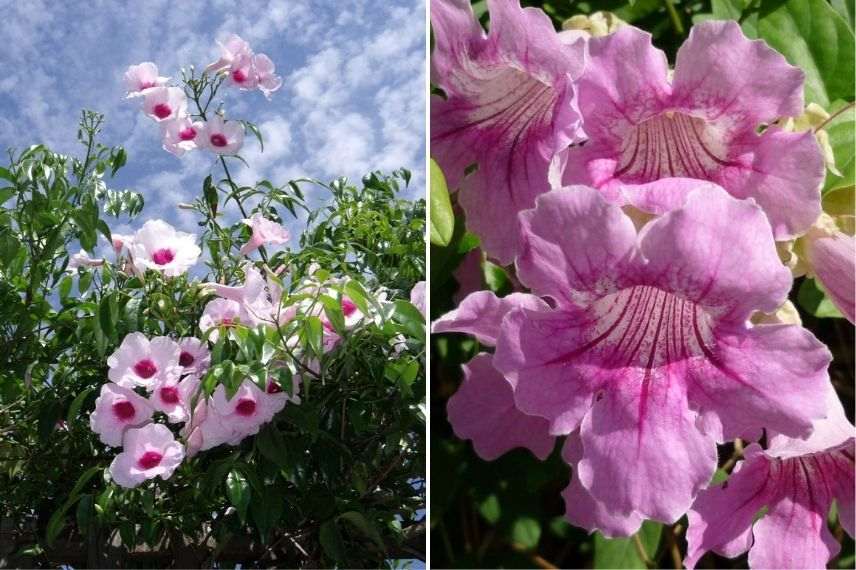
On the left Pandorea jasminoides ‘Rosea’; on the right the flowering of Podranea ricasoliana ‘Comtesse Sarah’
Read also
Bignonia: planting, pruning, propagatingYou live in the south-west basin.
These are the regions of USDA zone 8, experiencing more or less oceanic influence and where frosts of -5 °C to -10 °C can occur.
Here, choose the Campsis radicans ‘Flava’, a variety of hardy Bignone that can withstand temperatures of -15 °C. Its stump, however, can survive down to -20 °C, provided the plant is situated in a sunny spot sheltered from cold winds in regions with the harshest winters. Its golden yellow summer flowering is followed by flat, brown pods containing numerous small winged seeds. Its long, copper-brown barked stems bear deeply lobed and dentate foliage that is bright green in summer and golden yellow in autumn.
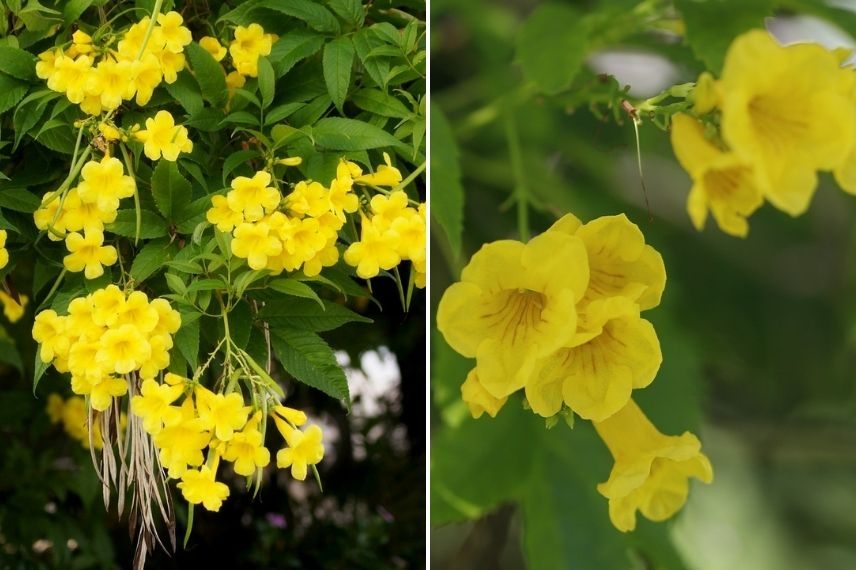
This hardy Bignone with yellow flowers has climbing roots to scale old walls.
Discover other Campsis - Trumpet Creeper
View all →Available in 0 sizes
Available in 0 sizes
Available in 1 sizes
Available in 2 sizes
Available in 1 sizes
Available in 3 sizes
Available in 1 sizes
Available in 1 sizes
Available in 1 sizes
Available in 2 sizes
You live in an oceanic climate or the extreme south-west.
In these regions, cold days are few and temperatures rarely drop to -10 °C. You can rely on the Campsis radicans or Virginia trumpet vine with trumpet-shaped flowers in reddish-orange colour placed against a wall exposed to full sun and sheltered from cold winds. This liana is voluble and has an exotic appearance withstands short periods of frost, down to -10 °C on average, and sometimes even more if it is south-facing and mulched in winter.
The Campsis radicans ‘Stromboli’ is a trumpet vine with splendid early blood-red flowering that proves to be as solid as it is hardy. Once well established, it withstands temperatures down to -15 °C and tolerates heat and drought. The ‘Stromboli’ trumpet vine is a fast-growing sarmentous bush that can reach 6 m in height and 4 m in spread. Its spectacular blood-red flowering occurs during the beautiful season, producing bouquets of 4 to 12 long trumpet-shaped flowers. The long stems with brown bark exfoliate in strips with age. The magnificent green foliage turns golden yellow in autumn before disappearing for winter.
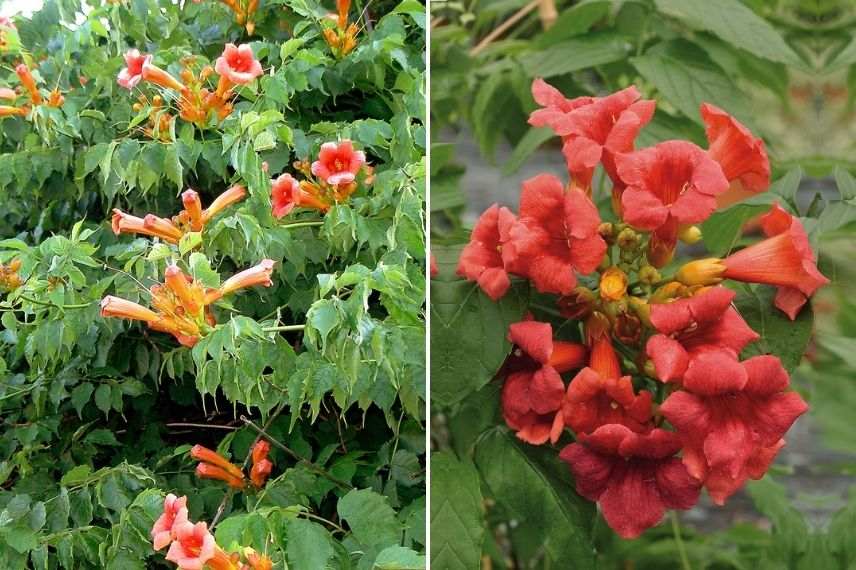
On the right, Campsis ‘Stromboli’, on the left, the trumpet vines of Jericho Campsis radicans.
Read also
7 hardy bignonia: the hardiest varietiesAnd everywhere else
In all other regions of France where winters can be harsh, you will choose to grow the Campsis tagliabuana ‘Madame Galen’, provided you protect its stump with a thick, insulating mulch during its first winters. This vigorous and very hardy Bignonia offers a long and spectacular summer flowering. Its USDA hardiness zone allows it to be grown throughout France. Indeed, once well established, this variety can withstand frosts down to -20 °C. Its splendid and abundant trumpet-shaped flowers, ranging from orange to salmon red, last all summer long.
The Campsis tagliabuana ‘Summer Jazz Gold’ is a very floriferous cultivar with yellow flowers and a compact growth habit, well suited for small spaces and colder regions. Perfectly cold-resistant, the hardiness of this Bignonia exceeds -15 °C when grown in full sun in well-drained soil. However, be sure to protect the stump from the cold with a thick layer of mulch during the first few years. The generous flowering begins in the early years and continues throughout the summer. The bouquets can contain up to 60 trumpet-shaped flowers, 7 to 8 cm long, bright yellow to golden yellow shaded with apricot. The large leaves turn a bright golden yellow in autumn.
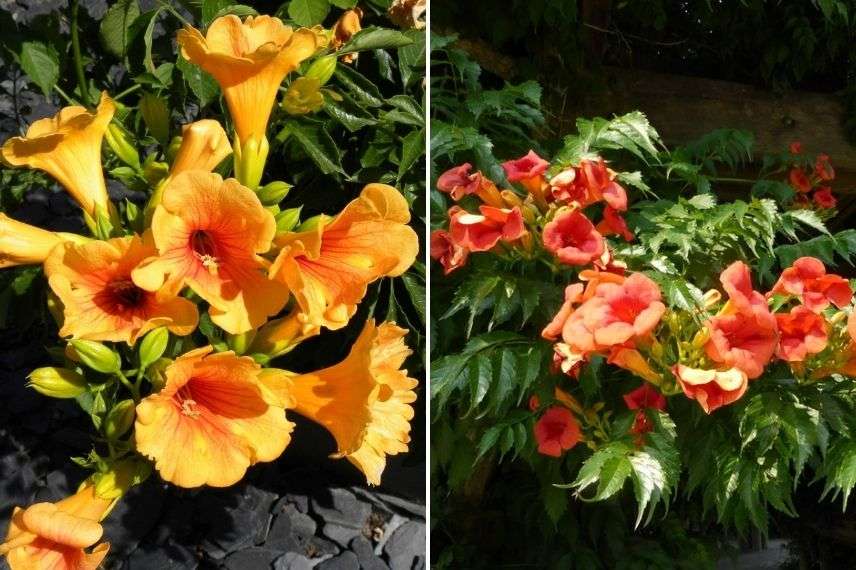
On the left, Campsis ‘Summer Jazz Gold’; on the right, Campsis ‘Madame Galen’
- Subscribe!
- Contents
































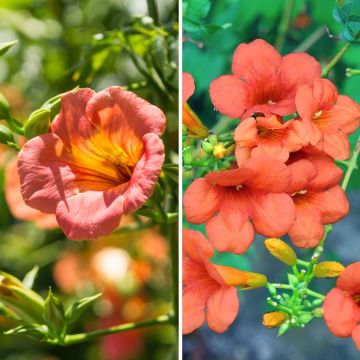
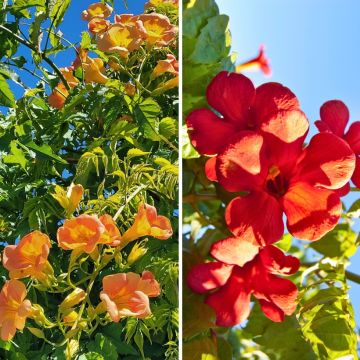
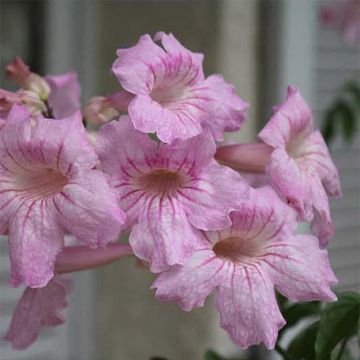
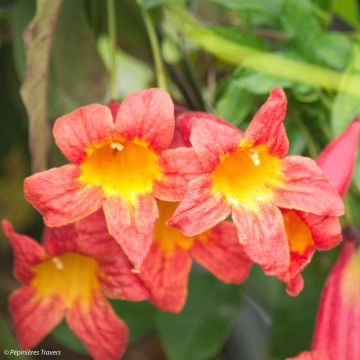


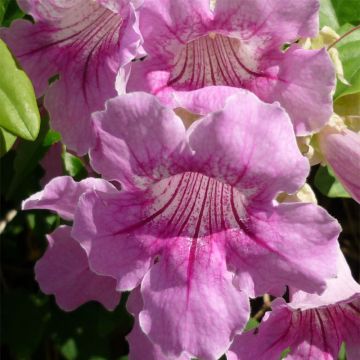



Comments